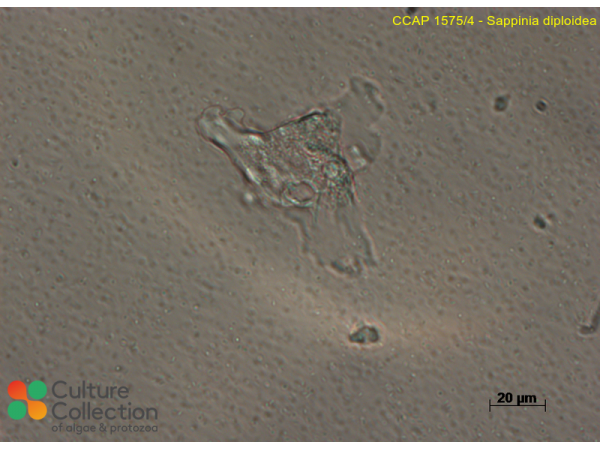Note: for strains where we have DNA barcodes we can be reasonably confident of identity, however for those not yet sequenced we rely on morphology
and the original identification, usually made by the depositor. Although CCAP makes every effort to ensure the correct taxonomic identity of strains, we cannot guarantee
that a strain is correctly identified at the species, genus or class levels. On this basis users are responsible for confirming the identity of the strain(s) they receive
from us on arrival before starting experiments.
For strain taxonomy we generally use AlgaeBase for algae and
Adl et al. (2019) for protists.
| Attributes | |
| Authority | (Hartmann & Nägler) Michel et al. 2006 |
| Isolator | Michel (2004) |
| Collection Site | bark of Sycamore tree Andernach, Germany |
| Notes | Isolation: wet pieces of piece of bark were transferred to NN agar plate; Both trophozoites and cyst are suited equally for transfer. Since it is about a binucleate amoeba with sexual behaviour clonal selection should be avoided with respect to the presence of different mating types; Sappinia diploidea is possibly pathogenic and as such requires an authorisation form completing before we can supply. See Walochnik, Wylezich & Michel 2010 and Visvesvara, Moura & Schuster, 2007. |
| Axenicity Status | Bacteria and other organisms present |
| Area | Europe |
| Country | Germany |
| Environment | Plant/Lichen |
| GMO | No |
| Group | Protozoa |
| In Scope of Nagoya Protocol | No |
| ABS Note | Collected pre Nagoya Protocol. No known Nagoya Protocol restrictions for this strain. |
| Collection Date | c 2004 |
| Original Designation | strain "Pl-247" |
| Pathogen | Potential Pathogen: Hazard Class 2 |
| Strain Maintenance Sheet | |
| Toxin Producer | Not Toxic / No Data |
| Type Culture | No |
| Taxonomy WoRMS ID | |
CCAP 1575/4
Sappinia diploidea
- Product Code: CCAP 1575/4
- Availability: Potential Pathogen

